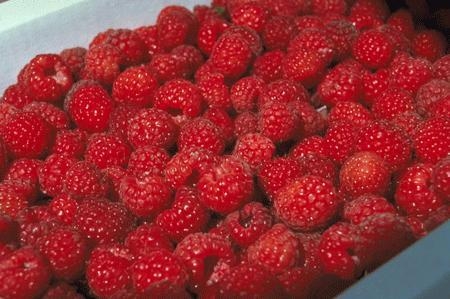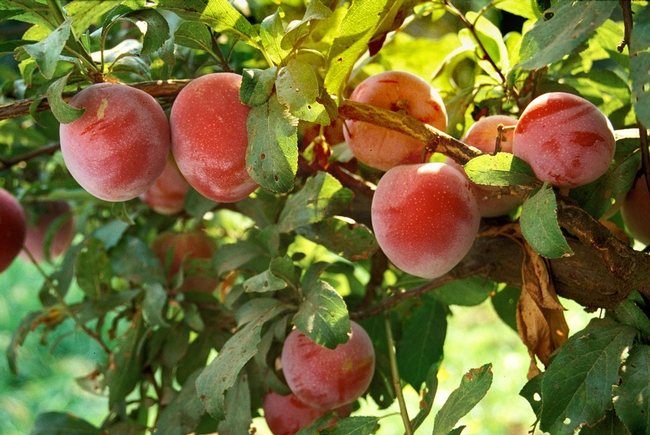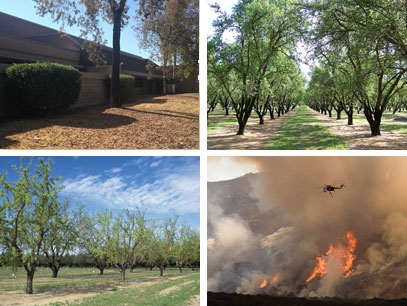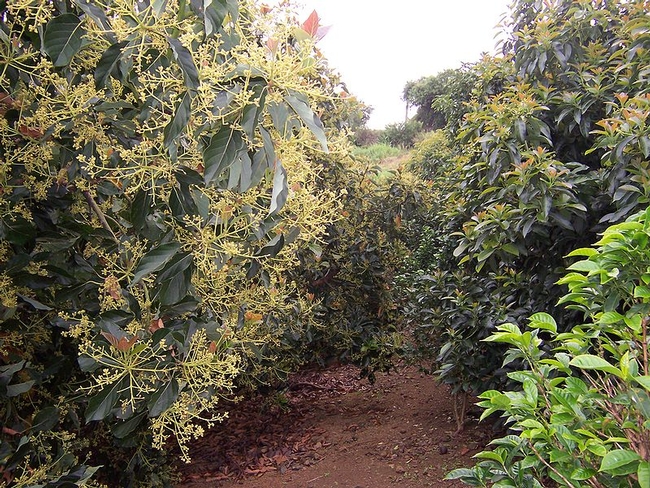Posts Tagged: Mark Gaskell
Sourcing sustainable food for students is a success
The UC system's goal to purchase 20 percent of its food from sustainable sources by 2020, one of the efforts connected to the UC Global Food Initiative, has already been achieved four years early, reported Scott Thill on Civil Eats.
The residence dining halls purchased 22 percent of their food from sustainable sources and five UC medical centers have reached 20 percent.
"I think our challenge going forward is realizing that 20 percent is considered a minimum-level threshold," said Tim Garlarneau, co-chair of the UC Sustainable Food Service Working Group and co-chair of the UC Global Food Initiative's Food Access and Security Subcommittee.
One way the article suggested to make more progress in sustainable food procurement is to purchase popular foods – like coffee – from growers in California, where the bean isn't typically grown. UC Cooperative Extension advisor Mark Gaskell said that he expects to see more coffee plantings and increased overall coffee acreage in central and southern California.
“This will always be a niche crop on small farms in California destined for high-value niche markets, but fortunately we have clearly demonstrated that very high-quality coffee can be produced in California,” he said.
Garlarneau notes that crops like coffee and bananas are better grown and sourced fairly from abroad while UC focuses on local sources for California-grown foods.
Systemwide coordination for purchasing higher costing food products (such as meats) that can meet campus and medical center specifications and demonstrate increased sustainability will require going out to bid to larger entities to meet the demand. As an example, Garlarneau shared UC's Sea to Table commitment to support small-scale fisherfolk to complement larger company offerings of sustainable tunafish and other seafood.
Media reaches out to UC ANR for drought news
As the California drought wears on, media have reached out this week to UC Agriculture and Natural Resources advisors about consequences in agricultural cropland, urban landscapes and fire-prone wildland.
Agricultural cropland
NPR's Valley Public Radio ran a story about salt buildup in almond orchards. Without rainfall to move salts below almond trees' rootzone, harmful levels of salinity are building up in the soil. “We've been seeing this increasing problem over the past couple years, due to the lack of winter rain, of sodium burn or salt burn on leaves," said UC ANR Cooperative Extension farm advisor David Doll. “Rain will do it (leach salts) naturally for us, but if we don't get rain we've been encouraging farmers to actually fill the profile with irrigation water, whatever they can by December. And then hopefully whatever rain we do get will help aid with the flushing of the root system of the tree.”
KCOY,KEYT andKKFX TV in Santa Maria ran a story on new technologies being used by a local strawberry farmer to irrigate efficiently. The farmer installed microsprinklers and moisture sensors on his strawberry field to monitor water and fertilizer inputs. Mark Gaskell, UC ANR Cooperative Extension farm advisor, developed the technology. "By identifying and carefully documenting how much water or nutrients are lost or how much variation there is, a grower can modify their management so that they can be more efficient when applying water," Gaskell said.
Urban landscapes
KQED Science posted an eight-minute interview with UCANR Cooperative Extension urban forestry advisor Igor Lacan. He explained how to irrigate young and mature trees so they won't die during the drought. Why protect trees, even as lawns are turning brown? Lacan says they boost property values, provide shade, filter the air and makes cities more “livable.”
Fire-prone wildland
Scientific American ran a story about the wildfire that swept across I-15 in Southern California last week, setting dozens of vehicles on fire. Firefighters were puzzled by the rapid spread of the fire. “There are two factors that help fires spread - winds and topography,” explained Scott L. Stephens, a professor of fire science in the Department of Environmental Science, Policy and Management at UC Berkeley. “The thing about wind is, it can change so quickly and the fire will change with it — it can happen in 15 seconds,” Stephens said. A fire can also race up a slope very rapidly, he added.
UC ANR plays a role in the California Small Farm Conference
More than 600 Californians convened in San Diego last week for the annual California Small Farm Conference, which connected farmers, ranchers and farmers market managers as they addressed the drought, farm bill, specialty crops, changing laws and marketing, reported Katie Thisdell in The Daily Transcript.
A host of UC Agriculture and Natural Resources academics took part by offering workshops, presentations and field courses. The conference also included presentations from innovative and entrepreneurial farmers trying to find new avenues to success.
Among them were Jay Ruskey, who owns Good Land Organics in Goleta. He has worked closely with Mark Gaskell, a UC ANR Cooperative Extension farm adviser in Santa Barbara and San Luis Obispo counties, to develop a viable coffee production system in the Golden State.
Ruskey has been growing coffee plants under avocado trees in coastal areas with farmers from Morro Bay to Oceanside, and has plans to market and brand a California-grown coffee that he says can rival Kona coffee. According to the article, his coffee has sold for as much as $90 per pound.
Former California Secretary of Agriculture A. G. Kawamura addressed the conferences on Skype from Abu Dhabi, where he was speaking at the Global Forum for Innovations in Agriculture.
“Whether you're large or small, whether you're organic or conventional, many of these challenges we face, we all face together,” Kawamura said. “This agricultural renaissance, if you will, comes at a time when many people are criticizing the food supply and criticizing agriculture. Agriculture is not the problem. As we move forward, agriculture has to be the solution. We see that all over the world, and all over our country exciting things are happening."
California coffee can be grown amidst avocado trees
Planting coffee shrubs right next to avocado trees is allowing a Central Coast farmer to grow a commercial crop of coffee without using any additional land, water or fertilizer, reported Parma Nagappan in TakePart.com.
The farmer, Jay Ruskey was working with UC Agriculture and Natural Resources advisor Mark Gaskell when they had a "eureka moment," the story said. Coffee bushes can benefit from the environment created by an avocado plantation.
"I went through lots of cycles of plantings looking at options for using unused land," Rusky said. "Interplanting works for a lot of reasons, and coffee fits perfectly with avocados because it has similar nutrition requirements."
Americans' coffee is typically grown in tropical areas of Hawaii, and Central and South America. Gaskell, who worked with coffee growers for Central America for several years prior to joining UC in 1995, approached Ruskey with the idea of growing coffee in 2001.
“My job is to help small farms with problem solving, so I'm always looking for these kinds of synergies,” Gaskell said of the interplanting technique. “Commercial water rates are high, so ‘How are we going to get the most efficient utilization of land and water?' is at the back of every grower's mind.”
Gaskell said it is important to note that coffee also does just fine by itself in open field planting as long as it is irrigated. It doesn't require avocado interplanting for success, but avocado interplanting is an additional opportunity for coffee growing in California.
In 2014, Coffee Review rated Ruskey's coffee - sold under the name Good Land Organics - among the top 30 in the world.
The publication's top ranking of Good Land Organics has made coffee associations elsewhere sit up and take notice of the potential for a high-quality, domestic crop, the Take Part article said.
“All of a sudden I'm thrown into the spotlight of the coffee world because I'm a disruption, which is something it needs, because it does not have a lot of research going on, like with other crops,” Ruskey said.
Hoop houses sprouting along Santa Barbara County roadways
The "Roadside Attractions" column in the Santa Maria Times today comments on the increasing number of hoop houses seen along Santa Barbara County highways and byways.
Hoop houses, long white tents also known as tunnels, shelter raspberries, the article said.
“There’s been a dramatic increase in berry growing in the county,” said Mark Gaskell, UC Cooperative Extension advisor for San Luis Obispo and Santa Barbara counties.
Hoop houses essentially serve as mini-greenhouses. Made of plastic stretched over hoops, they control heat and humidity and shelter plants from wind.

Hoop houses help growers regulate the raspberry ripening process so the delicate fruit can reach markets at an opportune time.




